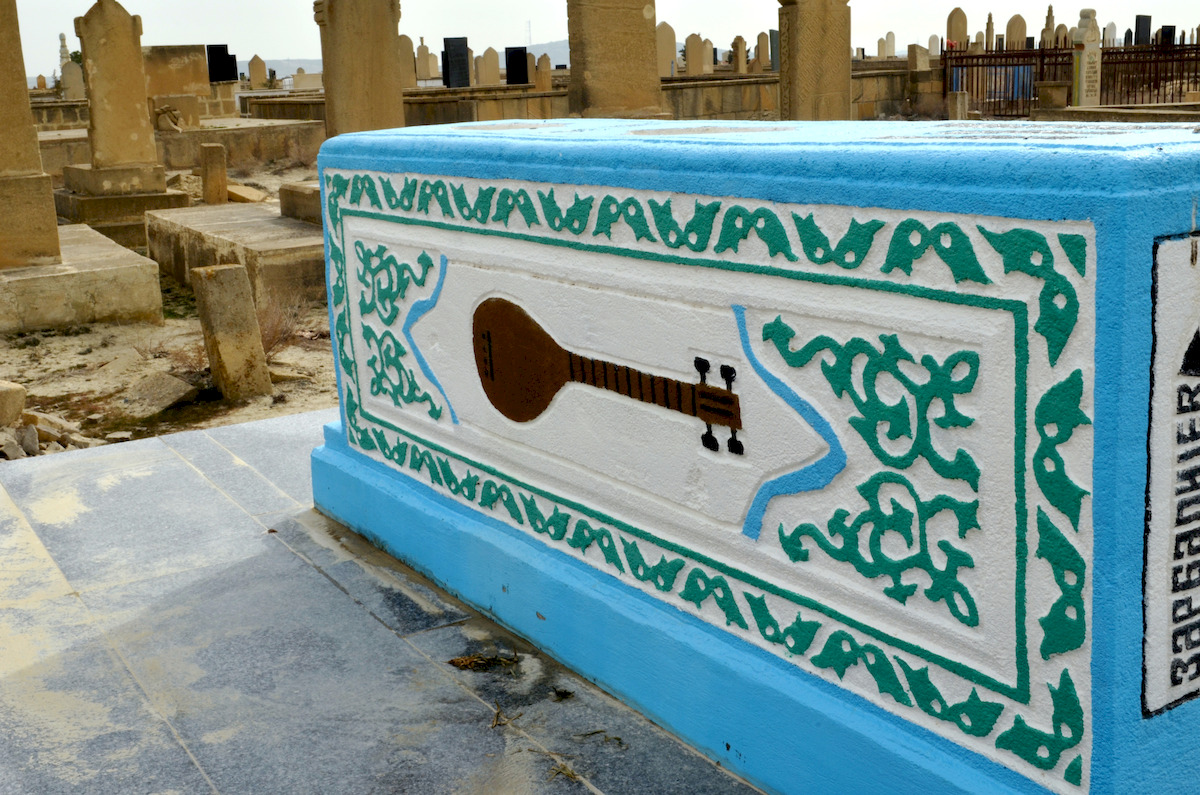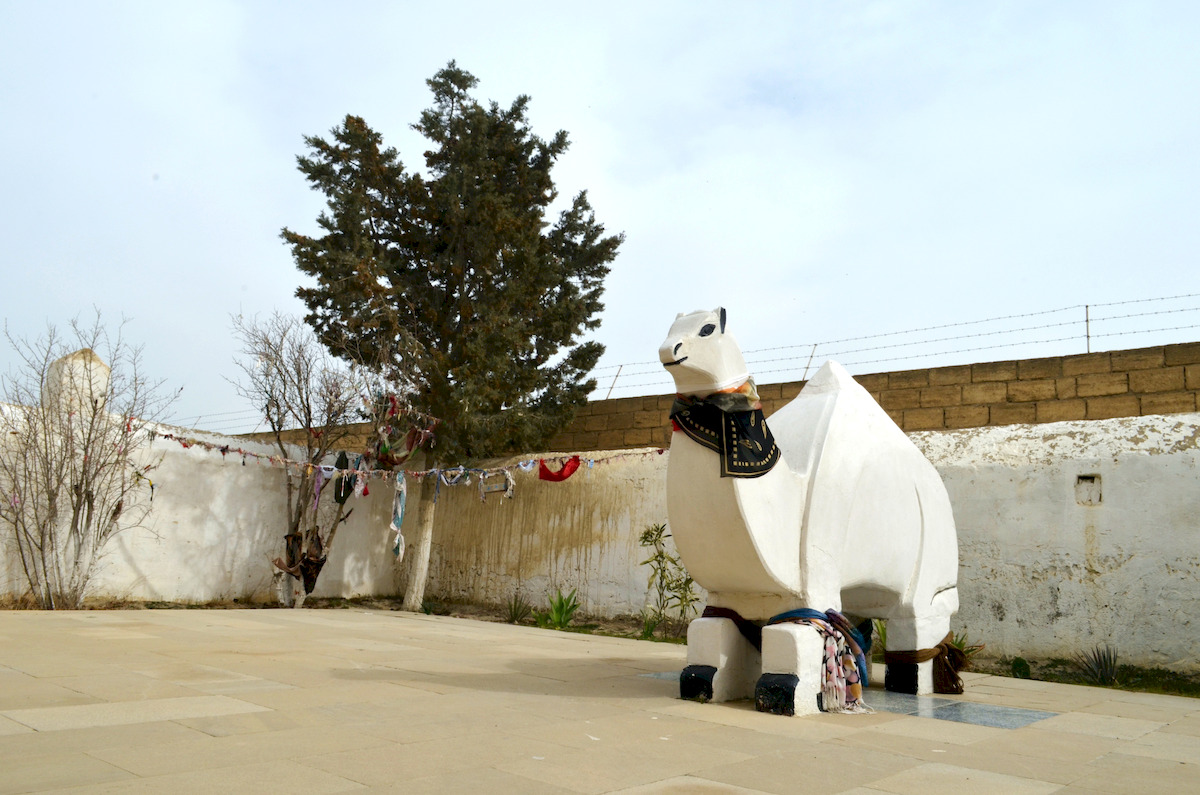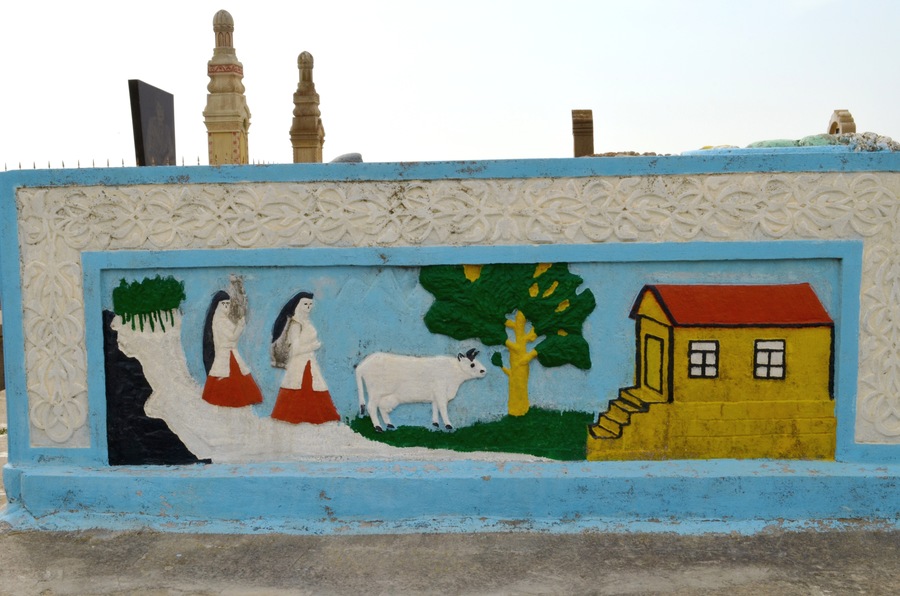50 km away from Baku city center in the serenity of a deserted land, close to Gobustan Park, lies a mysterious place unspoken and hidden from the public eye. Between two villages of Sangachal and Umbaku, as if being a mirage, suddenly you come across a cemetery much more colorful than anything you have seen before in Azerbaijan. As if some painter randomly arrived from heavens and decided to paint white limestone graves with joyful colors of blue, yellow, pink and green. Coming closer you see that these graves are not just graves, but pieces of art, with carvings and paintings of samovars, sewing machines, guns, cars, trucks, snakes, camels and even fruits common in Azerbaijan.

Soon you start to wonder, who are these people? What do those symbols, images and colors mean? Adding to this confusion, you will soon discover that the writings on the graves are in Arabic, Latin and Cyrillic scripts. Indeed, Sofi Hamid cemetery will tell you more about the history of Azerbaijan than any museum or history book. Functioning as a cemetery since the XVIII century, the stylistic approach and writings on the graves will narrate the story of this land’s inhabitants and their beliefs. Islam, Communism and then Islam again. Ideologies meeting each other in a perplexing and ambiguous ways that only locals will probably understand. Because even after the invasion of Azerbaijan by communists in 1920 that fiercely cut the ties of locals with Islam, this cemetery shows that Islamic ideology nevertheless persisted and reflourished during and after the long era of communism. For your information, this kind of a graveyard is very uncommon in Azerbaijan. And surely this cemetery can put Cimetière du Père Lachaise in Paris in shade. As one of Azerbaijani publishers beautifully described it, “… on the way to Sofi Hamid, although driving and passing by the hills and sandy deserted areas, it feels as if you haven’t moved even an inch and have long stayed motionless.”

This sanctuary and cemetery were built around the tomb of Sofi Hamid, about whom little is known. According to locals, Sofi Hamid and his brother were Arabian merchants who used to live in the XIV century, during the era of the powerful kingdom of Shirvanshahs. Sofi Hamid had a big camel herd, but his main reputation among the locals came from his Sufi teachings. At his deathbed, he asked his followers to bury him wherever his camel would rest. His will was granted and this spot became his tomb and shrine. When you enter Sofi Hamid sanctuary, the white camel statue that you will discover is where that camel had come to rest many centuries ago.
Later on, his “murid”s (follower/pupil of an Islamic teaching) also chose this area for their graves. By time, more people continued this tradition and those who wanted to be close to a sacred place had set their graves here. As time elapsed, Sofi Hamid’s sepulcher gained a sacral significance and people started visiting his tomb for good luck and with hope that their wishes will come true. This kind of sanctuaries are known as “pirs” among the locals and are very widespread across the country. These spots combine paganistic and Islamic beliefs, and for many muslims they are considered heretical. Oftentimes, women who want to conceive, bend under the camel three times. You will also see strips of cloths tied around the tree branches behind the camel. They symbolize the prayers of the visitors and some women even hang symbolic little matchboxes representing baby cradles. Some people claim that white camel symbolizes eternal life.
Sofi Hamid shrine is a symbol within a symbol. One question haunts the visitors after the visit: “What would be the image on my gravestone? What would be its colors?”

The shrine and cemetery are located near Gobustan (about 50km from Baku city center) and you can book your trip to Sofi Hamid with Baku Explorer here.




Comment (0)